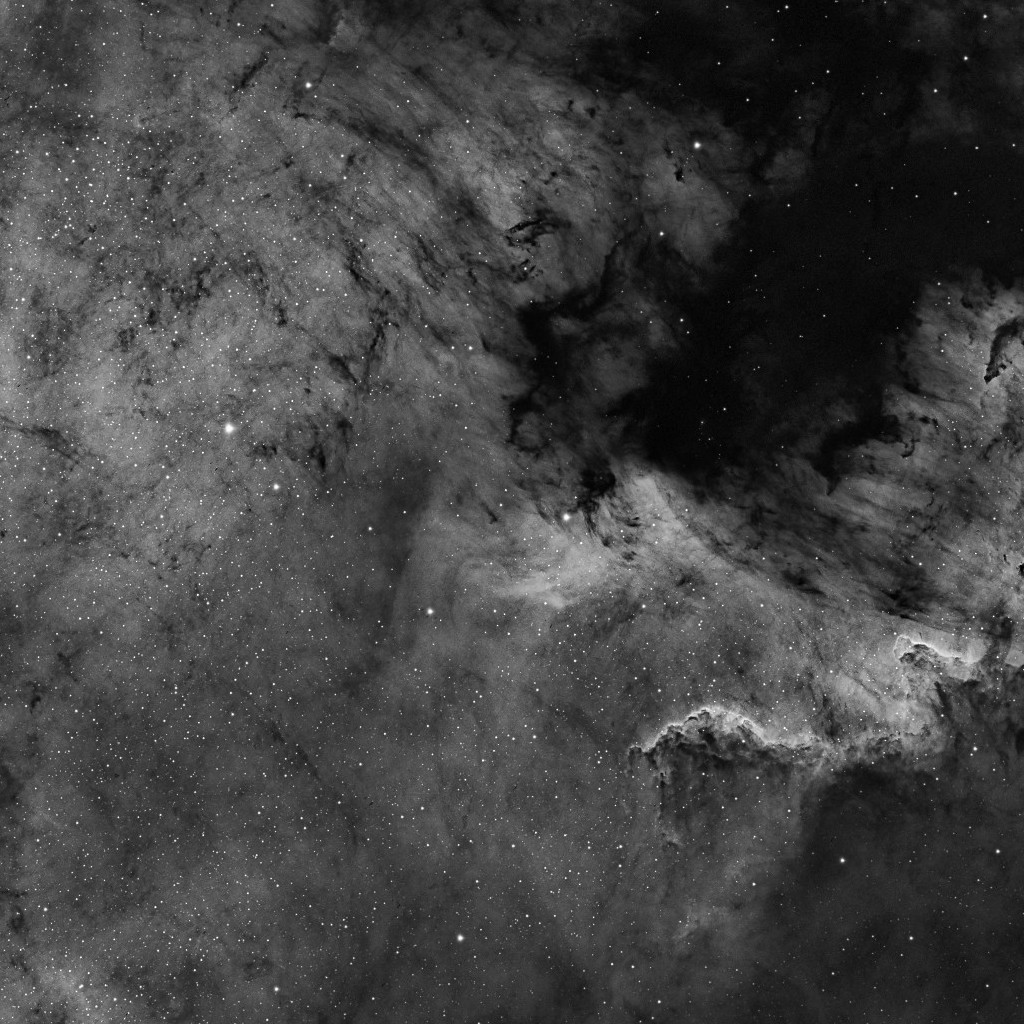SH2-117
After a long period without a new photo release, my new 65Q was ready for first time... on my EM200 seems just a toy for childs but I'm really impressed by its optical quality. At the beginning I had a pinched-optics problem, but is really easy to resolve just loosening a ring located after the flattener.
SH2-117 was my first challenge with this small telescope, located inside The North America Nebula is in fact cloud of ionized hydrogen (H II region). Between the Earth and the nebula complex lies a band of interstellar dust that absorbs the light of stars and nebulae behind it, and thereby determines the shape as we see it.
The distance of the nebula complex is not precisely known, nor is the star responsible for ionizing the hydrogen so that it emits light. If the star inducing the ionization is Deneb, as some sources say, the nebula complex would be about 1800 light years distance, and its absolute size (6° apparent diameter on the sky) would be 100 light years.
The nebula was discovered by William Herschel on October 24, 1786, from Slough, England.
Available downloads
Toma original sin procesar, sólo apilada y corregida (FITs)
Toma en Ha procesada en formato FITs a 32 bits por pixel y canal, resolución original (40.4Mb)


